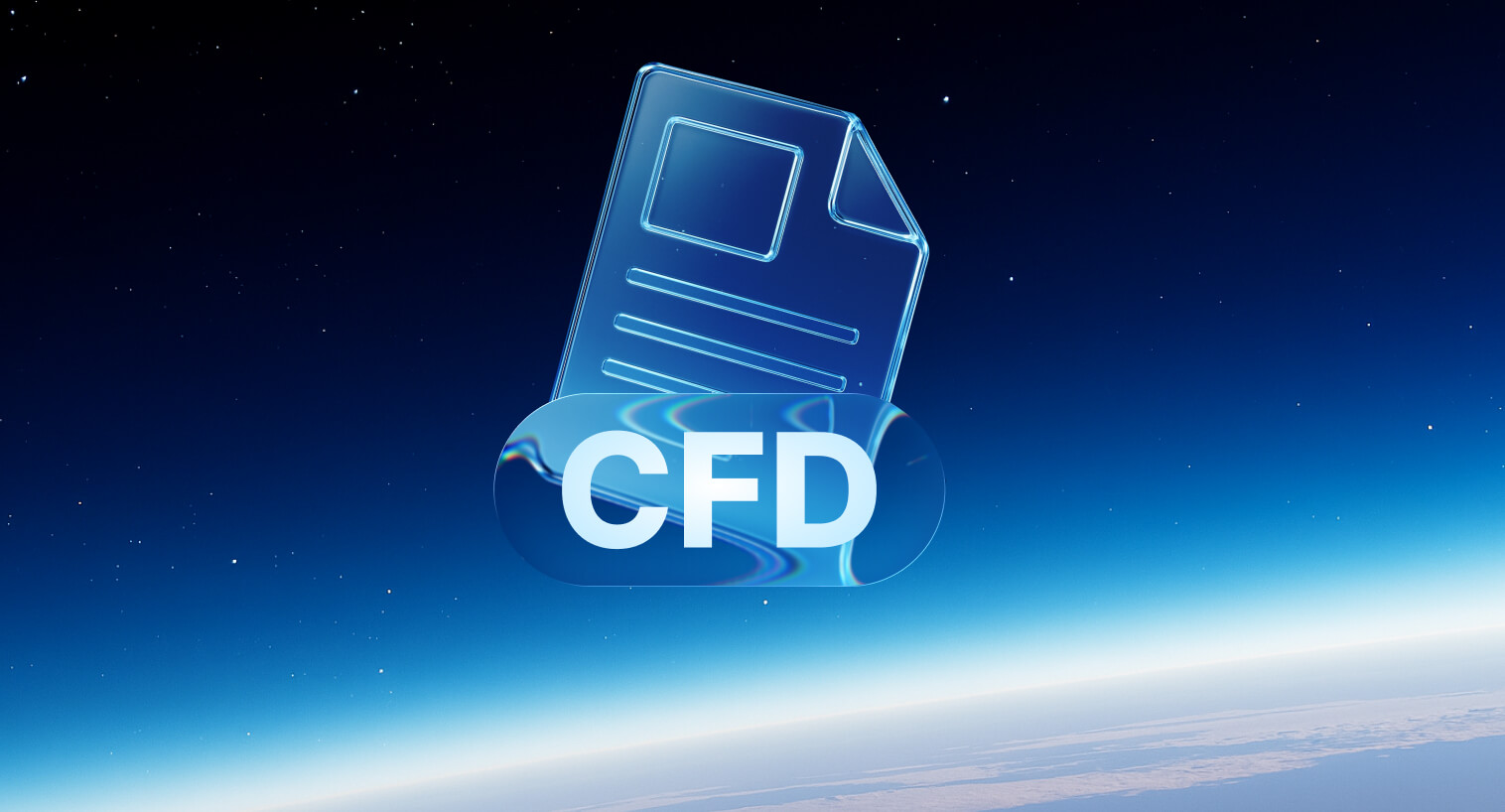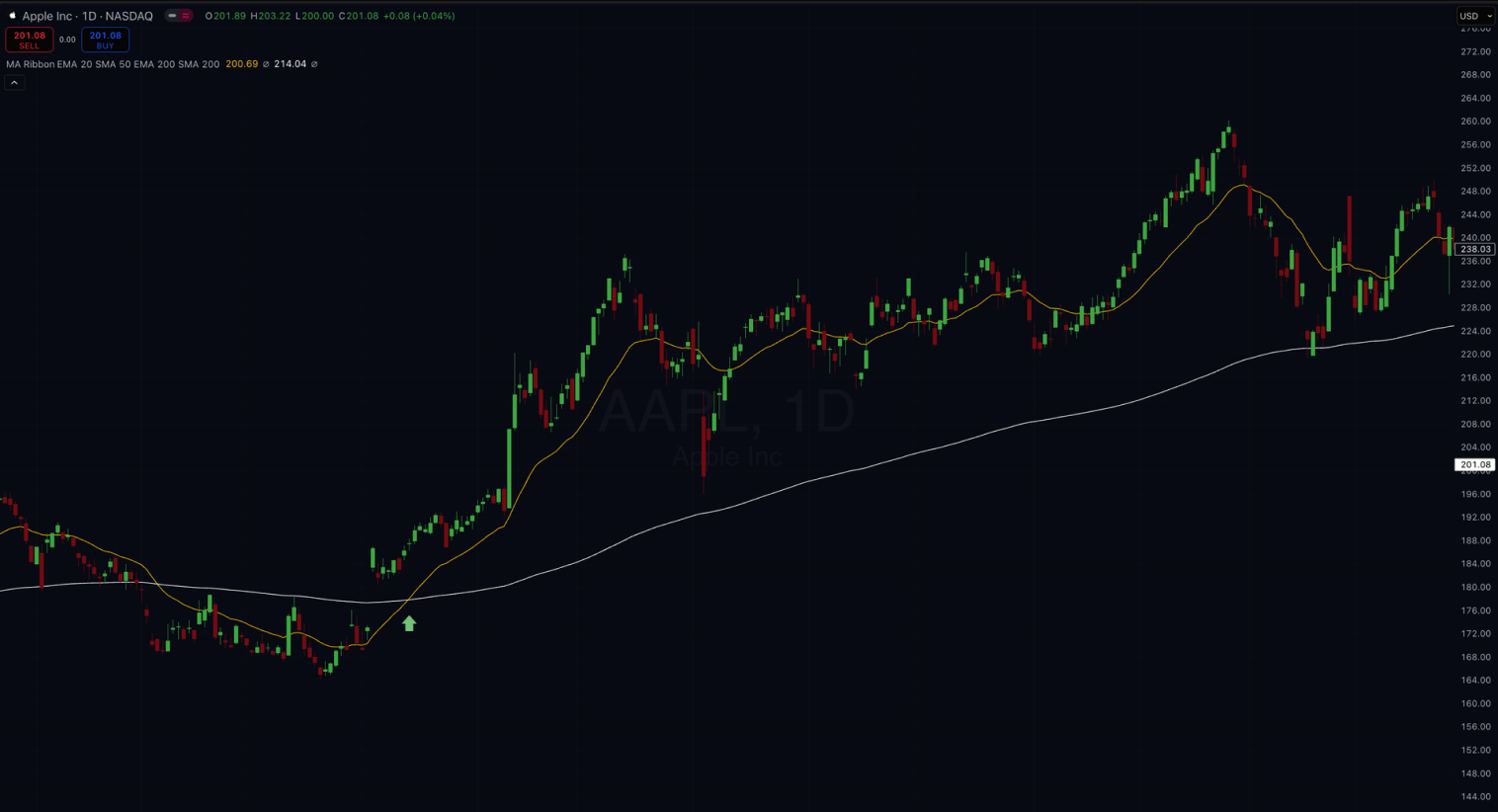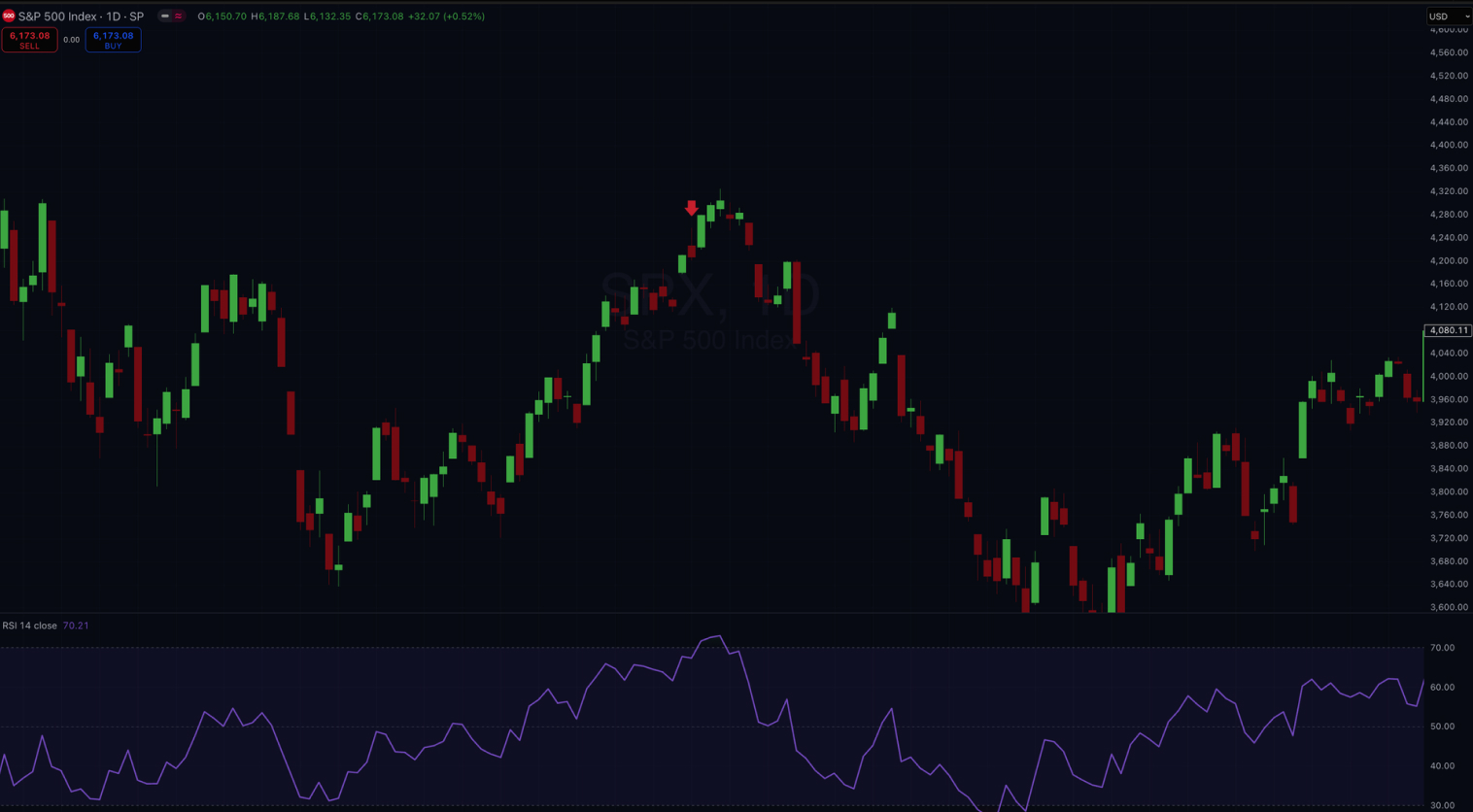Contract for Difference (CFDs) - Learn How CFD Trading Works


A Contract for Difference (CFD) is a form of derivatives trading that allows you to profit from price fluctuations without owning the underlying asset. You can speculate on the future price movement of an asset based on your analysis of its rise or fall.
The history of CFDs goes back to the early 1990s in London. Originally, CFDs were developed for institutional clients, especially hedge funds, as a way to access price movements on the London Stock Exchange without owning the underlying asset they wanted to speculate on. The main advantages of CFD trading for these large institutions were high leverage and ease of opening both buy and sell positions (i.e. long and short positions ).
By the late 1990s, with the rise of the internet, CFDs started gaining popularity among retail traders. Thanks to online trading platforms, access to financial markets became largely democratized, and brokers began offering CFDs to retail traders. This gave them access to a wide range of CFD markets, including global indices, currencies, and commodities, allowing anyone with a trading account to speculate on thousands of different instruments from a single platform.
In this article, we’ll take a closer look at the world of CFD trading, break down the principles behind how CFDs work, the assets you can trade, as well as the risks and rewards involved. We’ll help you unlock new ways to improve your trading skills in stocks, currencies, and commodities.
CFD trading is simply a contractual agreement where you exchange the difference in value of an underlying asset between the time the contract is opened and closed. Your profit or loss depends on how accurately you predicted the direction of the price movement. If you bet the asset’s price will rise and it does, you profit. If you expect it to fall and it rises instead, you take a loss.
Similar to swing trading, CFDs are mainly used for speculation, especially on shorter timeframes. The high leverage available allows you to control a large CFD position with a small amount of capital, increasing potential profits and enabling you to benefit from small price movements. Additionally, opening and closing positions is relatively easy, and you can profit from both rising and falling markets — offering flexibility that’s hard to find in other trading instruments.
In CFD trading, the term “open a long position” is used when you go long on a CFD. You do this when you believe the price of the underlying asset will increase. If you think a company’s stock is undervalued and will likely rise in the near future, you buy a CFD on that stock. If your analysis is correct and the market rises, you can close the position by selling the CFD and the difference between the open and close price is your profit.
On the other hand, a “short position” is used when you believe the price will fall. If you believe an index is overvalued, you can open a short position and make a profit if the market moves in your favor.
Understanding how leverage works in CFD trading is the first step before taking any action. Leverage allows you to open large positions without committing the full trade amount. You only need to deposit a portion of the position size, called the margin. For example, with 20:1 leverage, you can control a $20,000 position with just $1,000. This is what makes leverage so attractive to retail traders. Even a small price movement can lead to significant trading gains or losses.
The required margin is the amount needed to open and maintain a leveraged trade. It is a portion of your capital used as collateral for the open CFD position. There are two types of margin to be aware of:
Overall, margin requirements vary depending on the asset traded, volatility, and regulations.
Another key concept in margin trading is the margin call. It occurs when your account balance falls below the maintenance level. In this case, your broker will issue a warning requiring you to either deposit more funds or close the losing position. If you take no action and the position continues to incur losses, the broker will automatically close your position at the market price to limit the loss.
Contracts for Difference (CFDs) are traded across a wide range of financial markets and asset classes. Your CFD provider gives you access to global opportunities from a single account. While trading mechanisms are generally similar, each asset class has its own unique characteristics, trading hours, and factors that influence price movement. Understanding these nuances is essential for developing an effective trading strategy.
Overall, the main advantage of CFDs is high leverage. Leverage allows you to gain greater profits by holding large positions without needing to invest large amounts of capital. Another important advantage is flexibility — enabling you to easily open both short and long positions.
In addition, a significant advantage is the wide range of markets available for trading from a single platform, from stocks to cryptocurrencies. Many CFD providers offer easy access to thousands of different instruments, allowing traders to diversify their strategies and enter global markets with minimal barriers.
Ironically, the biggest risk in CFD trading is leverage. While it amplifies profits, it also amplifies losses. A small move against you can wipe out a significant portion of your capital, which can lead to a very rapid loss of money. Most retail accounts lose money when trading CFDs.
Another important factor is counterparty risk. Your ability to close a position and withdraw funds usually depends on the financial stability and integrity of the broker. If your CFD provider becomes insolvent, you could lose your entire account balance. This is very different from trading on a centralized exchange. Choosing a well-regulated and reputable broker is of the utmost importance.
The trading costs associated with CFDs directly affect your net profits and losses. These costs can be broken down into three main components:
The global regulatory landscape for CFDs is quite fragmented, meaning there are different national approaches to ensuring consumer protection.
In jurisdictions such as the European Union, the United Kingdom, and Australia, regulators have implemented a series of rules, including strict limits on the amount of leverage offered to retail clients, which depend on market volatility. They also provide negative balance protection, which ensures that a trader cannot lose more than the funds available in their account. Brokers are also required to automatically close positions when a client’s capital drops to a certain level. They must also display a risk warning indicating the percentage of clients who incurred losses.
Meanwhile, in the United States, CFD trading for retail clients is completely prohibited. U.S. regulators believe this practice presents a conflict of interest, as the broker can profit from client losses, and the high leverage is considered unsuitable for retail investors. U.S. regulators prefer exchange-traded products such as futures and options, which are seen as more transparent and offer simpler investor protections.
To understand where CFDs stand compared to other financial instruments, we’ve compiled the table below to help you evaluate structure, risk profile, and ideal use cases across different markets.
| Feature | CFD | Futures Contracts | Stocks | Options Contracts |
| Ownership | No ownership of the underlying asset | No initial ownership, but an obligation to buy or sell may arise later | Direct ownership of company shares | No ownership, but a right to buy or sell instead |
| Market Type | Over-the-counter trading with a CFD broker | Exchange-traded | Exchange-traded | Exchange-traded |
| Leverage | High | High | Low or none | High |
| Ease of Closing | Very easy | Easy | Difficult and relatively expensive | Easy through puts |
| Initial Costs | Spreads, commissions, overnight fees | Spreads, commissions | Brokerage fees, spreads | Premiums, commissions |
| Expiration | Usually none | Yes, standardized dates | None | Yes, standardized dates |
| Counterparty Risk | High | Very low | Low | Very low |
Considering that CFDs can be used across a wide range of markets and directions, let’s take a closer look at some examples of successful and unsuccessful trades across different asset classes.

Suppose you’re monitoring the daily chart of Apple stock using two exponential moving averages: a yellow 20-period EMA and a white 200-period EMA. When the yellow EMA crosses above the white EMA, it signals a potential bullish momentum, giving us an opportunity to open a long position.

In the following example, suppose you are monitoring the S&P 500 index. You notice a candlestick resembling a shooting star while the RSI is approaching overbought levels. You then decide to open a short position, believing that the bears will drive the price down.
Considering the example above, let’s suppose that the trader has a total of $10,000 in their trading account. The position opened required a margin of $420.14.
Instead of setting the stop-loss order, let’s imagine that the market rallied sharply against the position, causing an unrealized loss of $9,600. The account equity is now the initial balance minus the unrealized loss, so $400.
Because the Margin Level has fallen below 100%, the trader is now on margin call. At this point, the broker will send an alert and the trader will be unable to open any new position. They must either deposit more funds to their account or close the position.
If the trader fails to act and the losses increase, the broker’s automated system will take over and close the position.
Given that CFDs are leveraged products, risk management is not optional. The goal is to ensure that losses are controlled even before becoming profitable. The first step is understanding the risks and never using money you cannot afford to lose. Successful trading is as much about capital preservation as it is about generating profits.
A robust risk management plan should be established before the first trade is placed. It involves defining your risk tolerance per trade, often a small percentage of your total account, and determining the position size for market exposure.
Some essential risk management tools and practices include:
CFDs are flexible instruments that offer easy access to global markets from a single trading account via a broker. The possibility of using leverage to amplify returns on both bullish and bearish markets provides a level of flexibility that is highly attractive to retail traders. It is easy and simple to use CFDs for short-term speculation, hedging, and for accessing multiple assets. When used on pair with a deep understanding of the mechanics behind margin trading and proper risk management, they can be a valuable addition to your trading arsenal.
Keep a disciplined approach, focus on minimizing risk and continuous learning, and leveraged CFD trading can be a great allied to your trading career.
1. What is a CFD?
A CFD is a financial contract allowing traders to speculate on price movements of underlying assets, such as stocks, indices, commodities, or currencies, without owning them.
2. How do CFDs differ from traditional stock trading?
CFDs allow you to trade both long and short positions using leverage, meaning you only deposit a fraction of the trade’s full value, unlike traditional stock trading where you pay the full value upfront.
3. What markets can I trade using CFDs?
You can trade CFDs across various markets, including stocks, indices, forex, commodities, and cryptocurrencies, all from a single trading platform.
4. What is leverage in CFD trading?
Leverage lets you control larger positions with a smaller amount of capital, amplifying both potential profits and losses.
5. What does going ‘long‘ or ‘short‘ mean?
Going long means buying CFDs expecting the asset price to rise, while going short means selling CFDs expecting the price to fall.
6. What are the main risks involved with CFD trading?
The primary risks include significant losses due to leverage, margin calls, and counterparty risk if the broker becomes insolvent.
7. How do margin and leverage affect my trades?
Margin is the amount you deposit to open a leveraged position. High leverage increases potential returns but also amplifies the risk of substantial losses.
8. How can I manage risks when trading CFDs?
Use tools such as stop-loss and take-profit orders, prudent position sizing, avoid over-leveraging, and continuously educate yourself.
9. What is a margin call, and how do I avoid it?
A margin call happens when your account equity falls below required maintenance levels. To avoid it, manage your risk carefully, monitor positions regularly, and maintain adequate funds.
10. Why is choosing a regulated broker important for CFD trading?
A regulated broker ensures the safety of your funds, transparent pricing, and compliance with financial regulations, protecting you from the risks of unethical practices or insolvency.